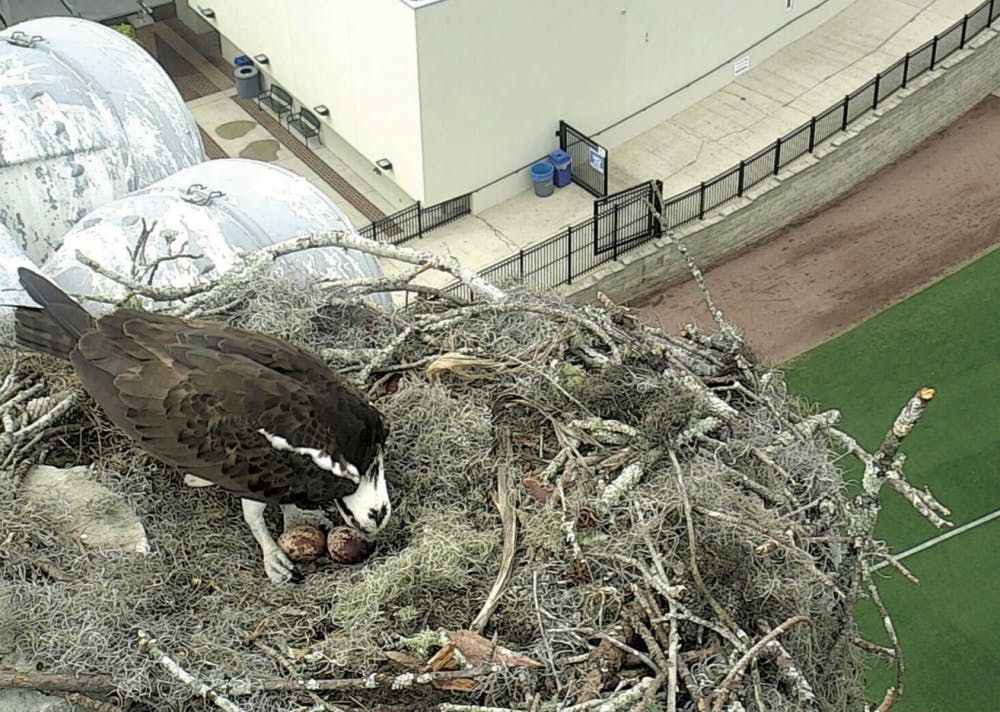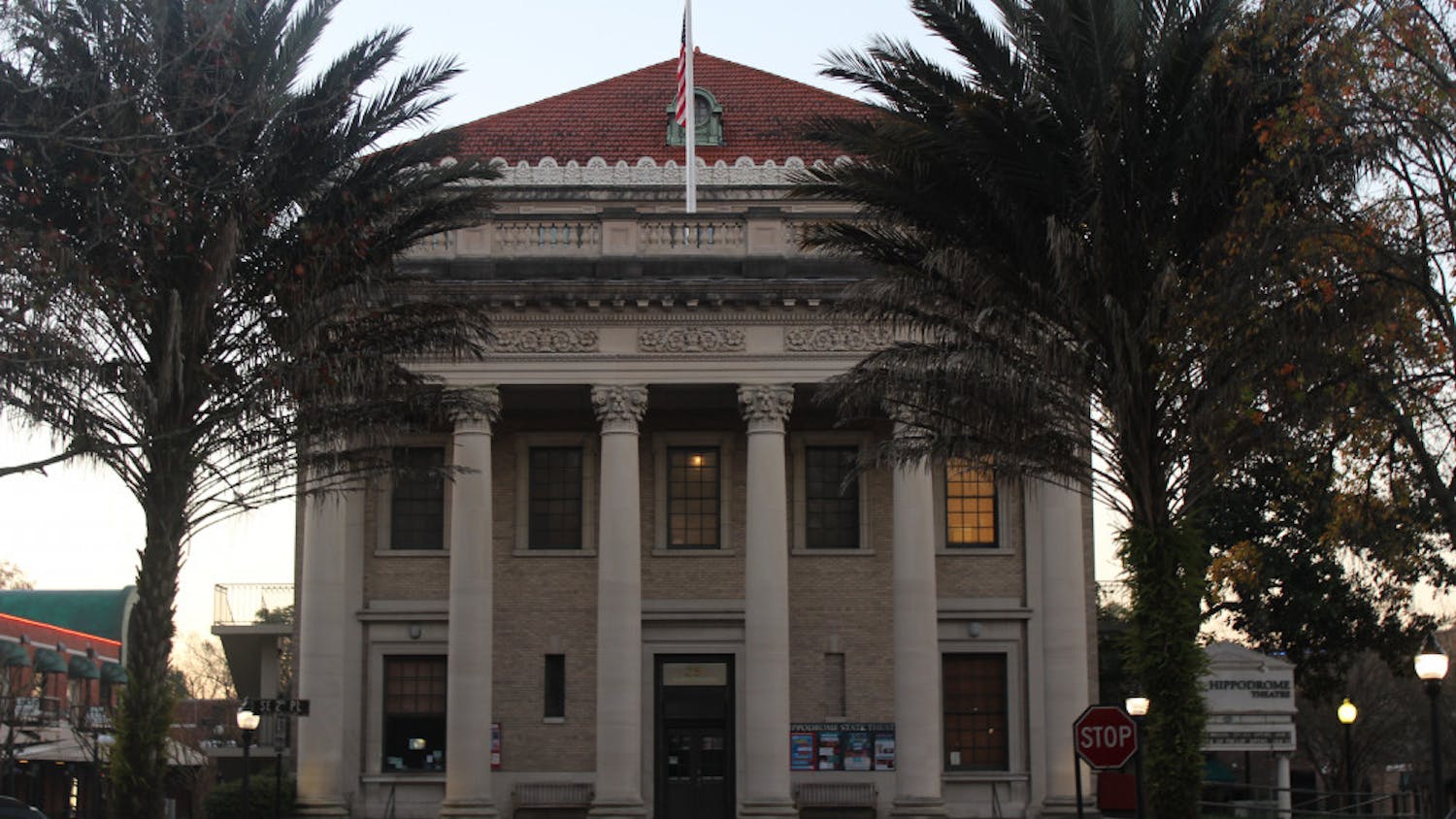While ospreys don’t show signs of mourning, Carolyn Fulwood was concerned when she saw egg casings lying underneath a lamppost last week.
The eggs belonged to a pair of ospreys who made their nest atop the lamppost at UF’s McKethan Stadium.
“I was just wondering how they felt,” said Fulwood, an 18-year-old UF elementary education freshman, referring to the eggs’ parents. “I bet losing their babies is terrible.”
Rain damage from turbulent storms caused the eggs to fall out of a hole in their nest last week above the stadium, said UF wildlife ecology and conservation professor Mark Hostetler. The two unnamed ospreys who conceived the eggs have been livestreamed on the wildlife ecology and conservation department’s website since January, according to Alligator archives.
Hostetler said the eggs were due to hatch this week. He said their fall was an unfortunate occurrence, but something that happens in nature.
“It’s a risk you take working with wild ospreys,” he said.
The livestream viewers first contacted Hostetler about the missing egg April 4, he said. The second egg was reported missing the next day.
Hostetler said when he went to investigate the nest in person, he could see light shining through it. Egg casings were lying in fragments on the ground.
The livestream of the birds, which laid the eggs during the first week of March, cost about $10,000 to install and $250 a month to maintain, according to Alligator archives. More than 251,000 people have tuned into the video so far.
When asked if the ospreys had a personality, Hostetler laughed.
“We observe other animals, and we attach personalities to them,” he said.
Three other osprey nests are above the baseball field, located at third base, left field and right field.
He said if a camera was pointed at all three nests, maybe he could determine the personalities of the birds.
But not all hope is lost for the ospreys to become parents.
Since the eggs are gone, the ospreys’ hormones will change, causing them to want to mate again, Hostetler said.
When mating, the male osprey will deliver a fish to the female in order to woo her, he said. If the birds conceive again, they will need to stay and rebuild the nest, which involves patching the hole and fixing the edges.
Hostetler said new eggs could be laid in the next two or three weeks.
Fulwood said she’ll be waiting to watch more of the ospreys’ adventures.
“It’s been awesome watching the ospreys’ journey,” she said. “I hope UF introduces more things like this.”
An osprey stands in its nest above UF’s Alfred A. McKethan Stadium with its two eggs. The future baby osprey’s parents, a male and female captured through a livestream established by the UF Department of Wildlife Ecology and Conservation, conceived the eggs in early March.






